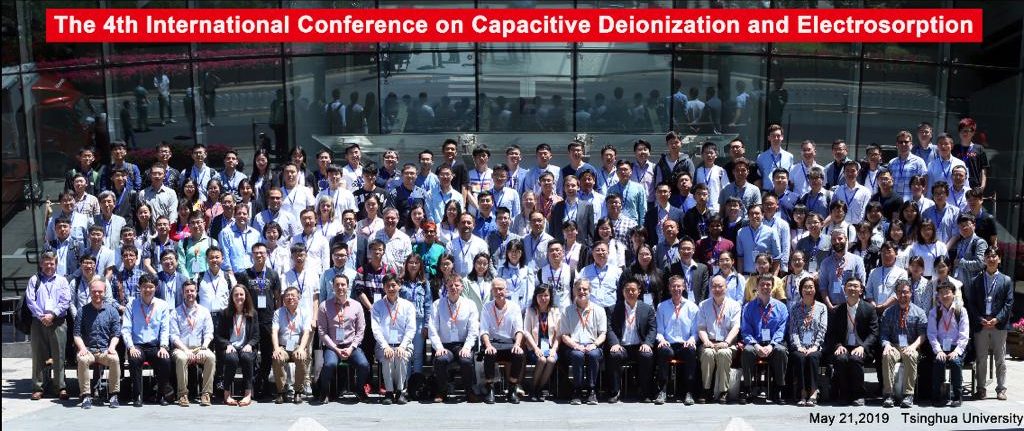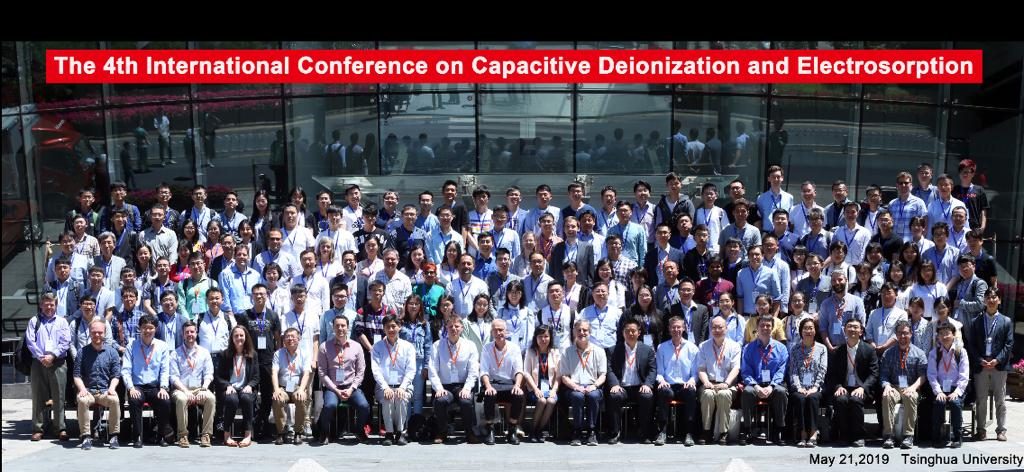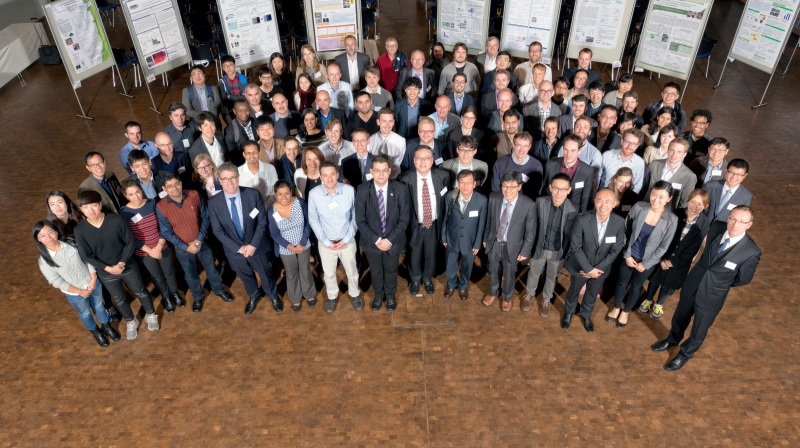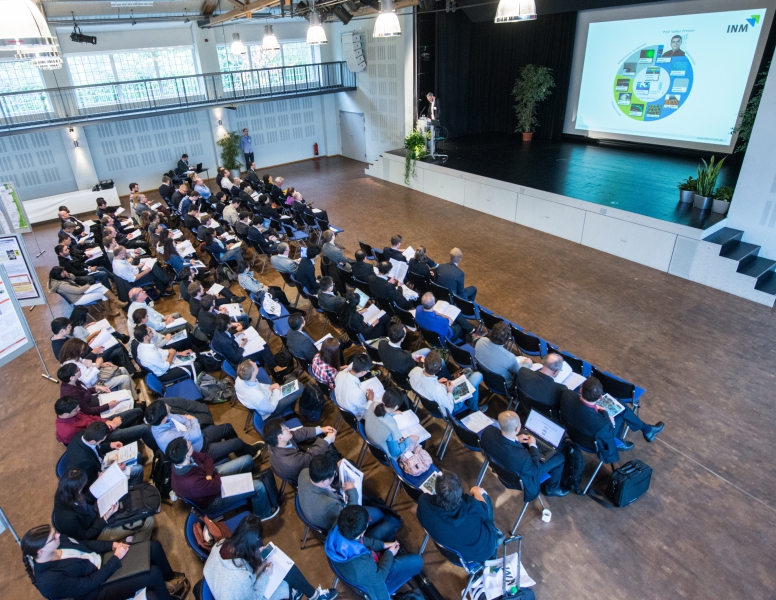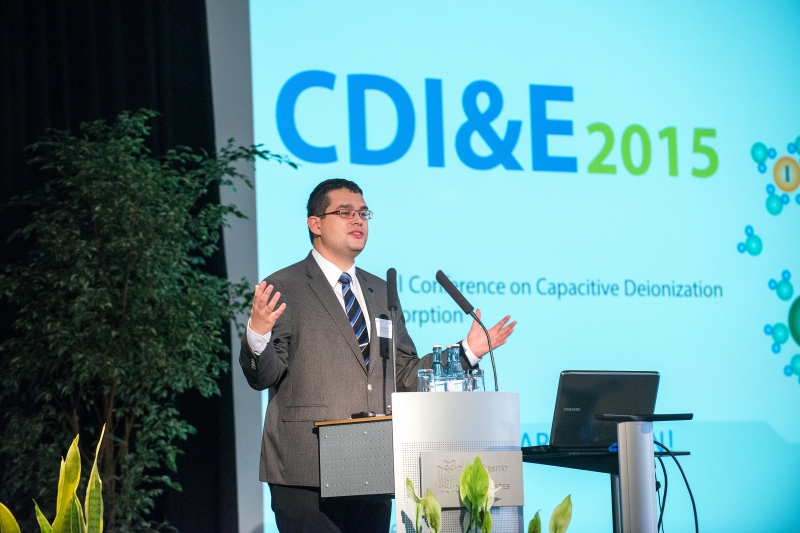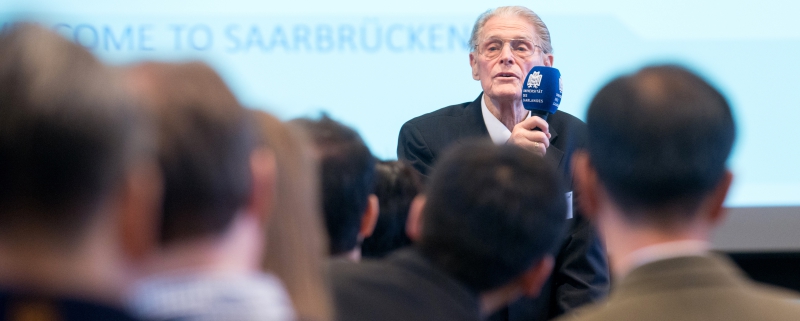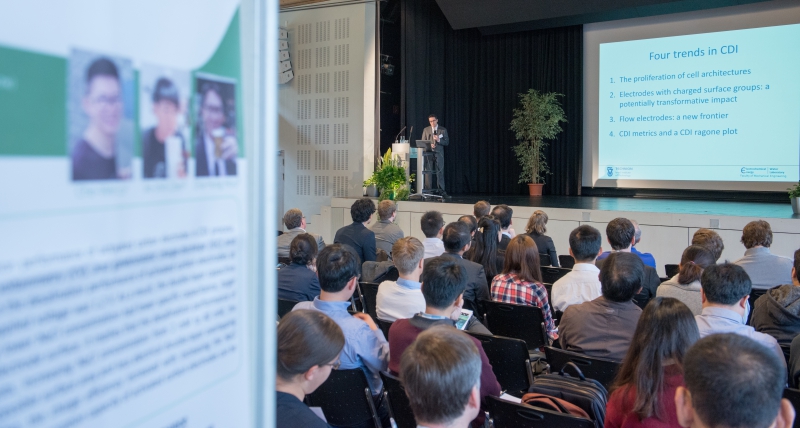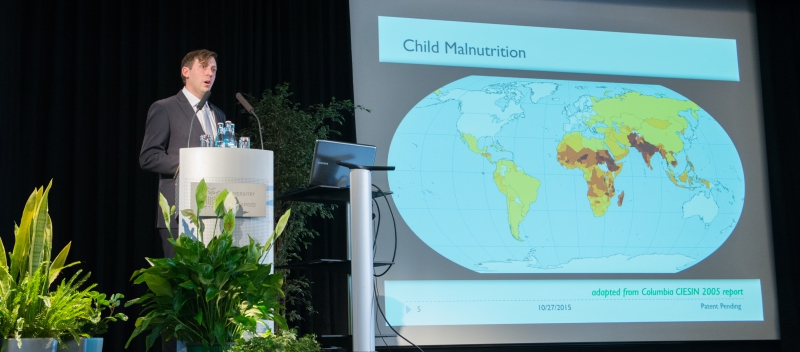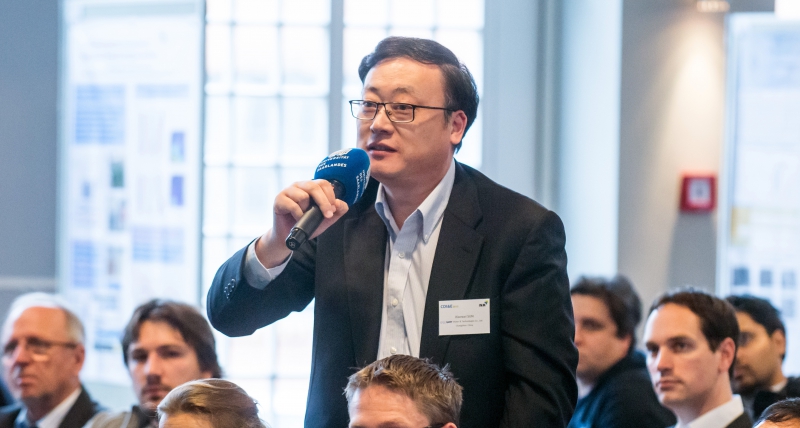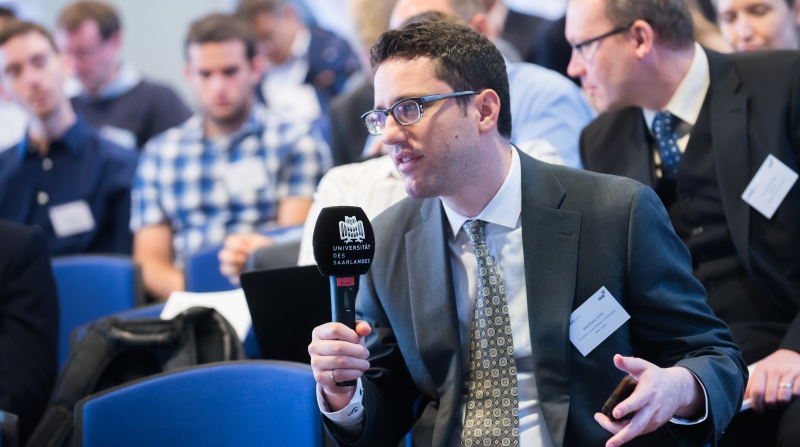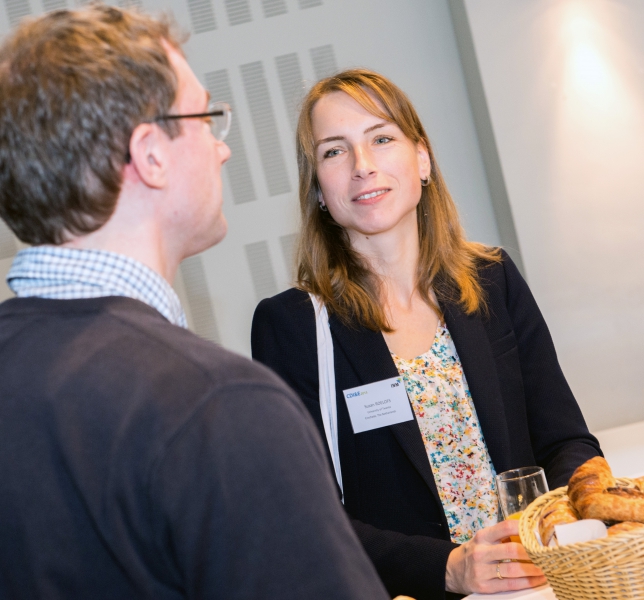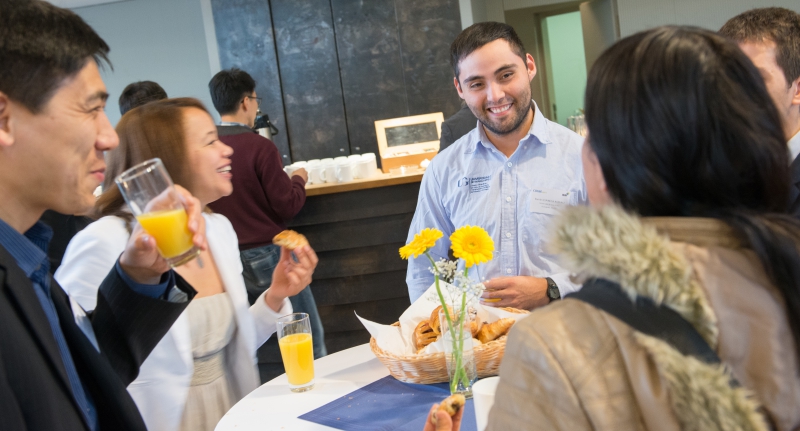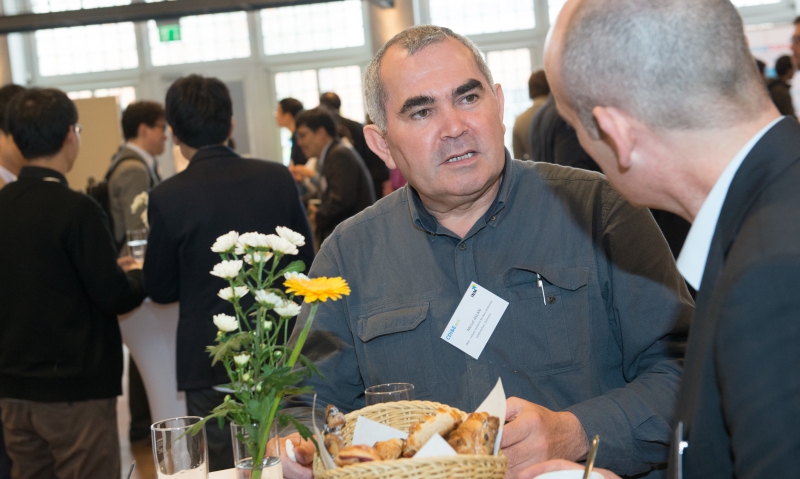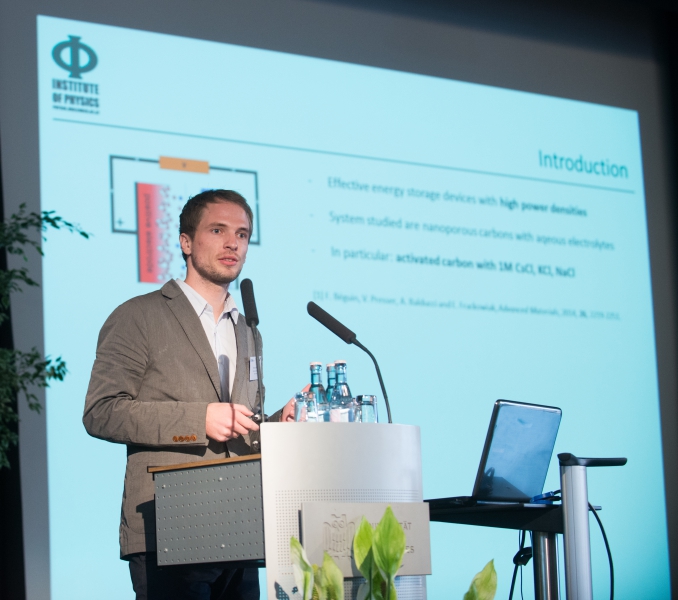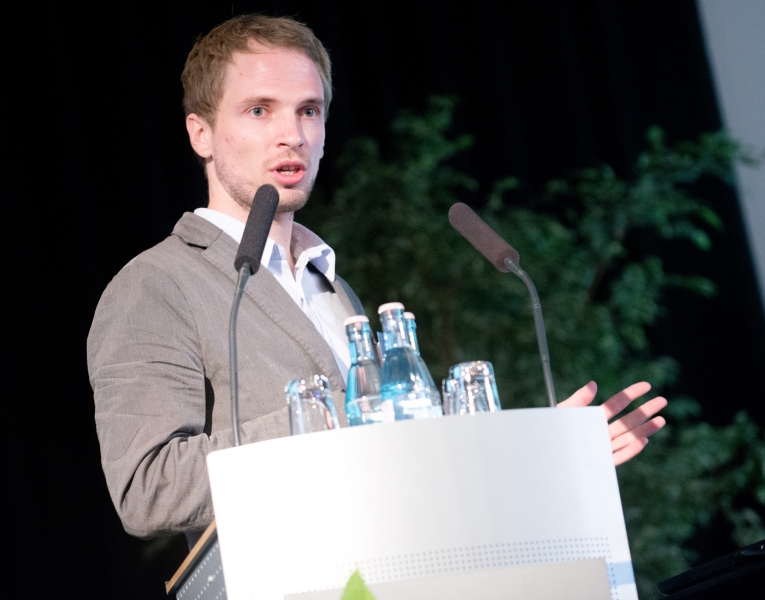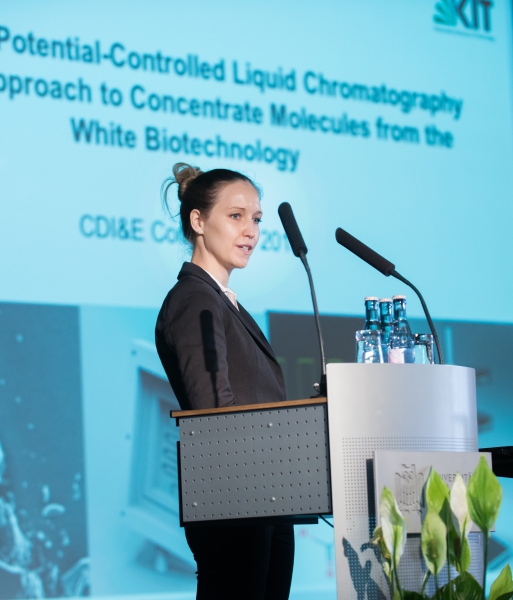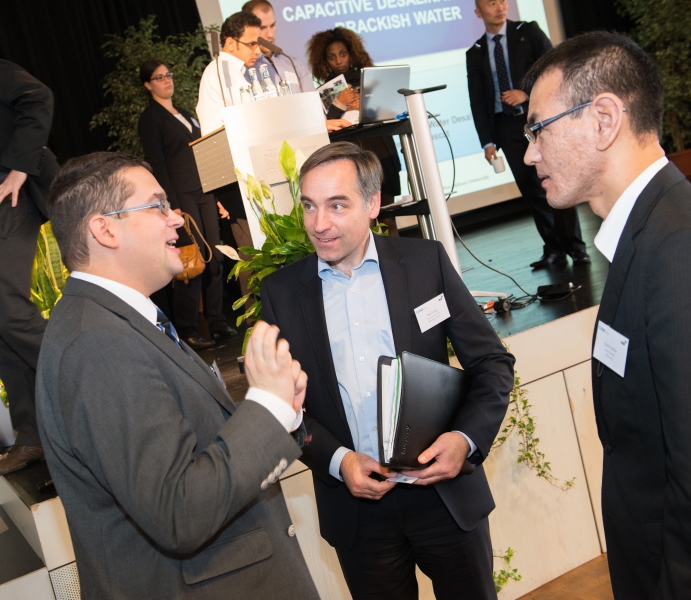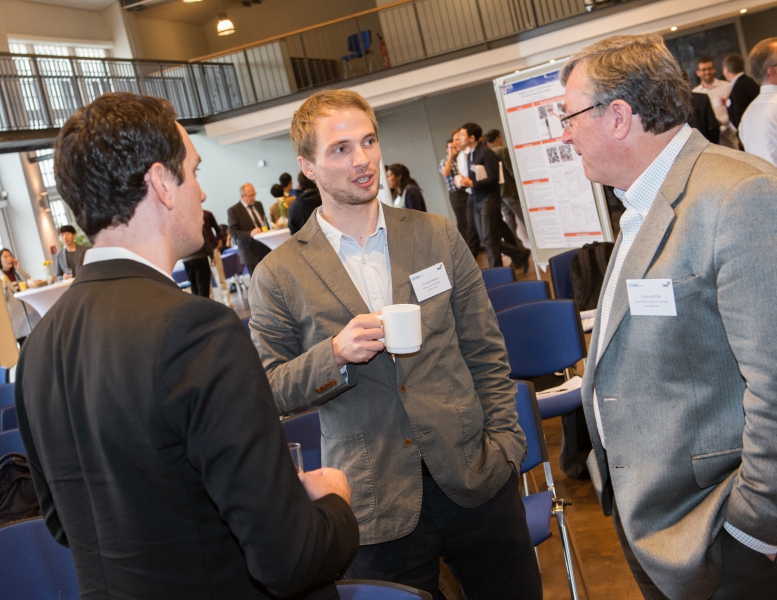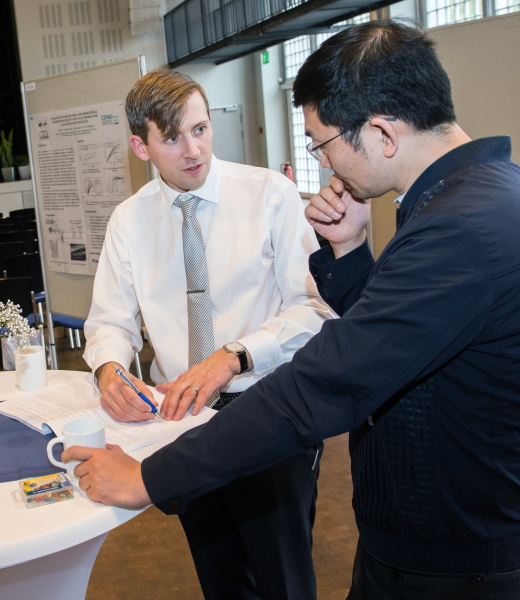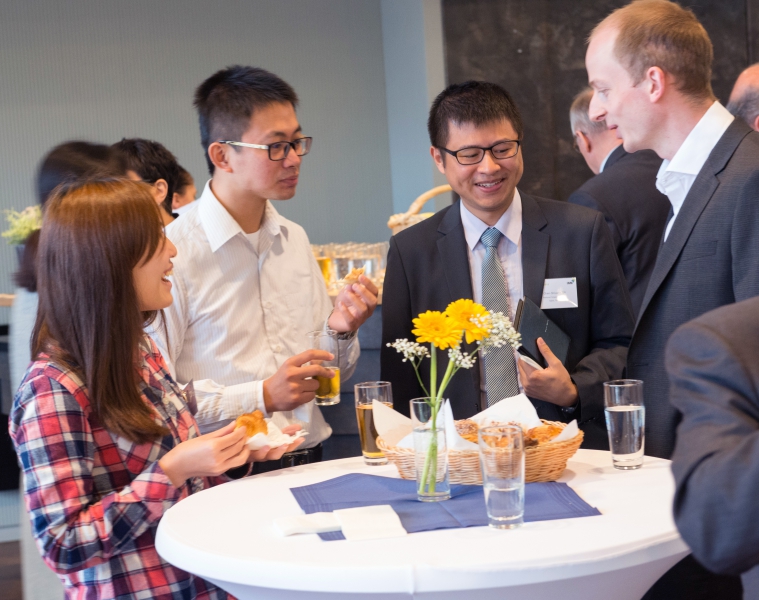Last week’s conference in Beijing was a great success! 200 scientists met in Beijing and discussed the latest scientific and industrial developments in the field of Capacitive Deionization. The 4-day conference started on Monday with three tutorials on theory, cell architectures and metrics by renowned professors. Thereafter, the scientific part of the program started, with many talks on operation, materials design, ion selective removal & recovery and the industrial application of CDI technology. The conference was hosted by Prof. Peng Liang from the School of Environment of Tsinghua University, and due to his tremendous efforts and the excellent support by his students, all scientists and industrial partners had an amazing week in Beijing!
Author Archives: webmaster
4th International Conference on Capacitive Deionization & Electrosorption (CDI&E) – Beijing, China, 20-23 May 2019
We are honored to introduce the 4th International conference on Capacitive Deionization and Electrosorption, which will take place in Beijing, China, from May 20 to 23, 2019. The conference will be a good forum for CDI researchers to present the latest results, to draw inspiration and ideas, and to probe into the future development of CDI&E technologies. Twenty eight renowned scientists have confirmed as keynote or invited speaker. Moreover, more than 100 abstracts have already been submitted. Please visit our website for detailed information: http://cdi-e2019.csp.escience.cn/dct/page/70006.
You can still submit an abstract for an oral and/or poster presentation. The deadline for submission has been extended to November 30th, 2018.
Also, early registration is open from November 1st, 2018 to February 28th, 2019. More information related to the conference will be posted on the website soon.
Website CDI-E 2017 online !
The upcoming 3rd world conference on CDI&E "Capacitive Deionization, Electrosorption, and Electrodialysis" will be held July 3-6, 2017, in Seoul, Republic of Korea. Following earlier conferences in The Netherlands and Germany, we expect an attendance of over 200 delegates discussing all aspects of water treatment and desalination using electrochemical methods based on porous electrodes and/or ion-exchange membranes, from materials science and theoretical studies, to process engineering and commercial successes.
The conference website is: http://www.cdi-e2017.com
The CDI-E working group is looking forward to welcoming you in July 2017 in Seoul, Republic of Korea !
Other CDI-related conferences in 2017 can be found here
How to reduce energy consumption in CDI? — reports from the US and Europe
Currently CDI devices consume significantly more energy than the theoretical thermodynamic minimum, and this is partly due to resistive power dissipation. To enhance the performance of CDI, identification of resistances in the CDI cell is important. Recently, two articles have been published on characterizing resistances in CDI and membrane-CDI (MCDI).
Researchers from Stanford University (US) published an article in Environmental Science and Technology. They characterize electrical resistances in a CDI system, present an equivalent circuit model and propose measurable figures of merit to describe cell resistance. They also found that contact resistance between current collectors and porous electrodes is the major contributor to cell resistance in nearly all published CDI cells. Contact resistance can be reduced by either introducing contact pressure between current collectors and electrodes or using pore-filling adhesive to create a point contact configuration. They emphasize here that energy consumption of the CDI process is the unrecoverable dissipated energy during an operation cycle, which should not include stored capacitive energy.
Researchers from Wageningen University and Wetsus (The Netherlands) published an article in Water Research. They outline a method to identify electronic and ionic resistances. They illustrate their method by calculating the resistances in an MCDI cell, for which they derived a full-scale model. This model is validated against experimental data and used to calculate the ionic resistances across the MCDI cell. Furthermore, they present a way to measure ionic and electronic resistances in a CDI cell, as well as establish the spacer channel thickness and porosity after assembly of the MCDI cell. Based on their findings, they show that, for MCDI, the carbon electrode thickness can be increased without significantly increasing energy consumption, which has the advantage that desalination time can be lengthened significantly.
* Y. Qu, T.F. Baumann, J.G. Santiago, M. Stadermann, Characterization of Resistances of a Capacitive Deionization System, Environ Sci Technol, 49 (2015) 9699-9706.
* J.E. Dykstra, R. Zhao, P.M. Biesheuvel, A. van der Wal, Resistance identification and rational process design in Capacitive Deionization, Water Research, 88 (2016) 358-370.
Conference CDI-Electrosorption Saarbrücken 2015 a great success !
October 25-29, 2015, the International Conference on CDI&Electrosorption was organized by the Institute of New Materials (INM) in Saarbrücken, Germany. In a beautiful location on the pittoresque campus of Saarland University, 120 attendees from all around the globe participated in lectures, a CDI-tutorial, and a poster session, with lively discussions during coffee breaks and lunches. An inspiring and diverse program was organized by the conference chair prof. Volker Presser (INM) and co-chair prof. Matthew Suss (Technion, Israel). Many new contacts were made during the opening mixer, the memorable excursion to an old steel and coal factory, and during the delicious gala dinner. We look back at a wonderful and very successful CDI&Electrosorption conference.
CDI&E conference Saarbrücken 2015 — Flyer available Now !
For our upcoming CDI&E conference, organized by Prof. Dr. Volker Presser (INM) and Prof. Dr. Matthew Suss (Technion), to be held in Saarbrücken, 26-29 October 2015, the flyer is available now !
A direct link to the conference website is www.cdi2015.de where you can submit your abstract for an oral or poster presentation. The conference registration has opened as well - note that the number of participants is limited, and thus make sure you register in time !
The abstract submission deadline is set to June 19, 2015.
Improved Modified Donnan Model accurately describes CDI equilibrium data
In an American-Israel-Dutch-Polish cooperation, the existing "normal" modified-Donnan model to describe the electrical double layer structure in (micro-)porous carbons, was significantly improved (ergo: the i-mD model) without jeopardizing the model's mathematical simplicity, allowing it to be incorporated in transport theory, and allowing it to be solved using simple spreadsheet-software such as Excel. This i-mD model was published in a special issue of the Journal of Solid State Electrochemistry, commemorating the late prof. V.S. Bagotsky. The i-mD model has the same advantage as the classical mD-model (developed in 2011 for CDI) namely that it is mathematically simple and can be used for transport modeling in porous carbons (note that the Gouy-Chapman-Stern theory will fail for sufficiently small pores, as the inherent pore overlap is not included in GCS theory), but in addition describes salt adsorption at high salinity much better. This was a weak point of the "normal" mD-model. The improvement consists of a slightly different formulation, not introducing more mathematical "fit"-parameters, and actually, the new model has a strong physical background, based on attractive ion-ion correlation forces. Prof. Martin Bazant (MIT), the senior author of the paper, comments "It is quite remarkable how such a simple model fits data so beautifully. I was very surprised myself. As far as I know, the simple form of the ion correlation force expression that we present, is new. Possibly in the future we will find out if we need a more accurate expression, but for the moment this simple model works like a charm, and it has a physical basis which has the advantage that further extensions such as considering the case of ionic mixtures becomes possible."
PhD defense Taeyoung Kim scheduled for 28 October 2014
The PhD defense of Taeyoung Kim (PhD student in SNU under supervision of Prof. Jeyong Yoon) is scheduled for 28 October 2014. The title of thesis is ‘Desalination performance and mechanism of carbon electrodes with respect to physicochemical and electrochemical properties in capacitive deionization’. After graduation, Taeyoung is going to keep working on research in various fields, thus looking for a postdoctoral position worldwide.
CDI Publications 2014 Prof. Jeyong Yoon – Seoul National University
This year, Yoon’s group in Seoul National University, Republic of Korea, has published three papers on CDI.
Hierarchically porous carbon was synthesized and used as a CDI electrode in collaboration with Prof. Park’s group (Carbon Nanomaterials Design Lab., SNU) (Yang et al., Carbon 71 (2014) 294-302). In this paper, a novel carbon material derived from metal organic framework (MOF) was prepared and its pore structure was characterized. Unique pore structure of MOF-derived carbon (MDC) consisting of micro-, meso-, and macropores allowed for a rapid and considerable amount of desalination compared to activated carbon (microporous carbon) and carbon aerogel (meso- and macroporous carbon). Thus, this paper has successfully elucidated the role of each pore size in CDI.
In the next paper, a new method to evaluate rate capability of CDI electrodes was proposed using a potential sweep method (Kim et al., Electrochimica Acta 139 (2014) 374-380). Potential sweep method can enable sweeping of potential in various rates, thus resulting desalination performance can be an indicator for rate capability. As a result, electrode thickness, flow rate, and salt concentration were found to parameters affecting rate capability, which is in good agreement with previous CDI papers.
Recently, constant voltage and constant current operations were compared focusing on salt adsorption capacity and energy consumption (Kang et al., Desalination (2014) accepted). Results said that constant current operation is advantageous in terms of energy consumption because of its low voltage profile.
Korean CDI research network established
Korean CDI research network has been established (Prof. Jeyong Yoon as chairman). Various research groups with different disciplines joined the network including Hyundai Heavy Industries (Yong-Shin So, in charge of general affairs), Korean Institute of Energy Research (KIER), and SionTech.
